Mango Languages Review: Why Most Learners Choose It In 2024?
By J Maver
January 10, 2024 • Fact checked by Dumb Little Man
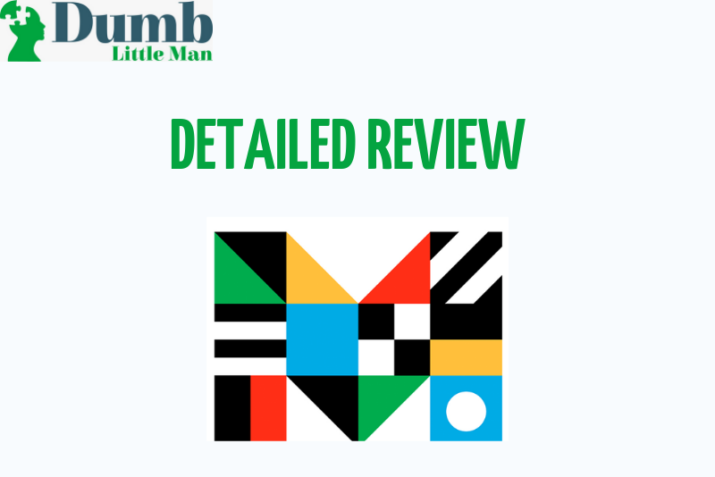
As a language-learning platform, Mango Languages has won numerous awards and is situated in Farmington Hills, Michigan. It was created by a team in 2007 that consisted of four ambitious inventors who wished to use technology to break down language and cultural barriers.

Through scientifically proven methods, Mango aims to teach students to build practical conversational skills so they may quickly move from a non-speaker to someone who can have meaningful interactions in a foreign language.

Mango Languages is a good resource with courses of over 70 languages and regional variations available. It’s great for beginners or people who really like to learn several languages at once. Reviews say that Mango Languages aren’t very useful for those who are over the intermediate level.
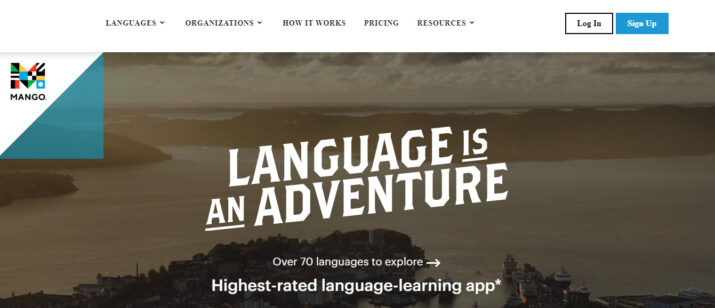
Mango Languages Review
What Is Mango Languages?
Mango Languages is an online language-learning program, appears to offer a deal that’s too good to be true. Mango’s library, which contains more than 70 language courses and other brilliant features, is available for roughly $18 a month. Also, it’s free at a lot of libraries around many countries in the world!

If you are an English-speaking person and want to learn a foreign language like Spanish along with a group of people and learn new words, you can utilize Mango. You can try the same in the alternative app Babbel too!
Click Here To Read More About Babbel!
A variety of drills are offered to help you become more fluent at speaking quickly in a natural context. Natural and unscripted language is taught to the students.
And, most significantly, the courses are tailored to the language to make it easier for students to learn it.

Conversation abilities will improve as a result of using Mango Languages. Most advanced students and others who rely heavily on their writing talents will not find it useful, though.
Pros
Color codes:
Words are color-coded in Mango, making it easy to determine what they mean and how to translate them. Also, you may sometimes turn on a literal translation to examine how the meaning changes from the word-for-word English translation.
Pattern highlighting:
Mango Languages has a great feature called pattern highlighting. Something about it grabs your attention.
There is also a highlighter for the English text fragments so that you may match them to their respective target languages. One of the most powerful features you’ll find in any language school or software is this seemingly simple feature.

Audio quality:
Mango Languages excels in the area of voice quality as Pimsleur.
Click Here To Read More About Pimsleur!
The voice is very clear and enjoyable to listen to. Mango languages have studio-quality voice actors with years of experience.
Slowing down the playback isn’t an option, but the voice quality is so good that it’s not really essential.

Interactive Lessons:
Speaking and listening skills are taught in every course, along with typing and writing (typing). A slide deck is used for each of the classes. Each lesson has a minimum of twenty slides to go through.
In general, lessons begin with a dialogue in which the target concepts appear in the dialogue. This information is then delivered in bits and pieces, with each succeeding slide adding more concepts and complexity to the original discourse.
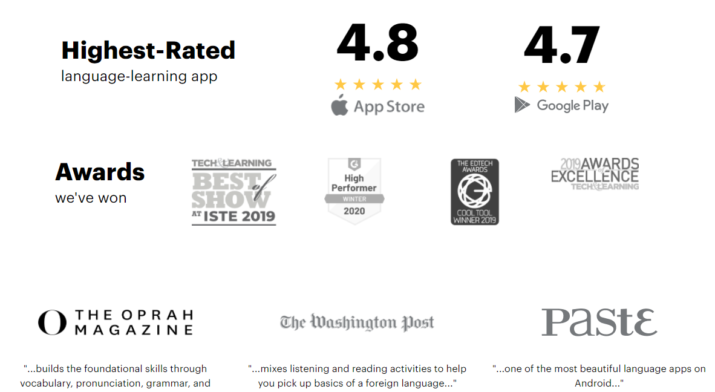
You will see that each screen has a different type of activity or drill. Whether it’s listening to a new word’s pronunciation or rearranging words in a sentence, it’s easy.
Working with Native Speakers:
Courses are created by linguists and native speakers who teach the words, phrases, and sentences as well as animate the classes’ talks. You can have dialogues with native speakers who speak the language. You can speak to them if you have any problems. You also get hands-on course material.
Professionally produced and studio-recorded audio ensures a clean and clear sounding track. Many popular online language learning programs do not have this feature.
Cons
Lacks depth
In most languages like Spanish and Hindi, Mango lacks course depth. With Mango Languages. However, despite the fact that it has the potential to be a fantastic course option for so many languages, the actual content/substance is too low.
It’s true that certain languages are better than others; Spanish, the most common language, covers a lot more ground than Icelandic. But even if the courses only cover the basics of esoteric languages, they should include more.
Lack of Images and Video Components
A few photos were used in the early days of Mango Languages to support their teachings. To make the program more effective, these components should be incorporated into the lessons, especially for visually-oriented learning students. Also, there should be voice packs too.
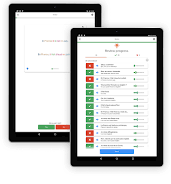
There is a lack of good visuals in some courses like Spanish.
Room to improve the grammar content
Mango believes in organic language acquisition, hence there isn’t much grammar instruction in Mango for courses like Spanish and French.
Some of the Mango classes contain grammar notes, but they’re a bit sparse and once you pass them, there’s no way to access them again unless you redo the entire lesson.
For advanced language learners, there is a lack of content
However, Mango Languages won’t work well for advanced students in need of more complicated stimulation.
The word and phrase recall method are still used in Mango, thus students never get to use their desired foreign language spontaneously or in lengthier spoken or written contexts. There aren’t many course materials and resources for them to practice writing and speaking.
How Does It Work?
It’s not easy to learn a new language. Making a verbal and physical commitment to a new method of speaking is challenging, but rewarding in what you’ll learn along the way.
Incorporating native-language, voice, and advanced algorithms, Mango’s adaptive learning approach adapts to your progress and individual learning tendencies, equipping you to begin the discussion with confidence.

For Android and iOS, Mango Languages has a web application, as well as an app for Android and iOS. You must make an account in order to utilize it. It’s easy to do and your progress is saved once you’ve done it. You can read the reviews in the play store and post a review too.
Choose where to begin learning each of your chosen languages. Duolingo, for example, If you are learning Spanish, will not provide access to any advanced lesson unless you have completed all previous levels or taken and passed a quiz. Anywhere, anytime is possible while using Mango Languages.
General Structure
The general structure of learning a new language is well-defined and easy to understand. You work your way through units, chapters, and lessons. There’s a way to skip ahead if you’d like. There are resources that you can use to practice.
A brief synopsis of each chapter provides you an idea of the lesson you’ll be learning in that chapter.
As opposed to Duolingo, it doesn’t tell you the verb tenses or grammatical rules you’ll practice. In Mango, this isn’t a readily available option.

There are both Conversation Goals and Grammar Goals listed on the complete chapter description page, which is where you’ll eventually get a note about practicing the informal imperative and such.
The style of instruction is the same from the very first lesson to the very last class of the course. As a result of the lack of variation, it quickly becomes dull.
This is how it works: An English word is displayed alongside the language you’re studying on Mango’s screen.
Finally, Mango asks you to recall the foreign translation after seeing the word in English a second time. In the end, you’ll have enough words to form a sentence. Whenever you are confused, you can see an example too. There are many examples in the resources. These resources are helpful whenever you feel you are stuck at a point.
Every time you take a class, you’ll be given a task in English and asked to translate it. This means you won’t be asked to answer multiple-choice questions, take a spelling test, or fill in blanks.
You could never listen to a spoken sentence and then have to choose from a list of printed phrases to determine what it was that was being said!
To understand the word in another language like Spanish, you must think of its English equivalent. It’s always the same presentation in English, followed by a fresh language memory exercise in English.
How Many Languages Does It Have?
Over the past ten years, Mango Languages has become a leading brand. Mango used to be known as a free library resource.
Aside from library resources, the organization appears to be active in schools (homeschooling is a popular option), corporations, and even the military.

As of now, Mango provides over 70 languages in its library and app, like Spanish, French, Hindi, Urdu, etc and also some very obscure ones and even some outstanding dialect variations (it’s actually one of the only course options for Iraqi Arabic, Latin American, Persian Farsi, and Aramaic, among many other languages).
In addition to dialects and versions (e.g. Arabic offers MSA and Levantine), ancient and sacred languages (e.g. Latin, Ancient Koine Greek, Biblical Hebrew), novelty/fun languages (Shakespearean English, Pirate), and an American language (Cherokee) are included in the library of 70+ languages.
Extra Tools That Are Useful
Besides, resources, lessons, and testing your knowledge, there are other ways to increase your target language proficiency. You’ll find them in the Pathways menu on your app, right next to your standard Pathway.

You’ll have different options depending on whatever language you’re trying to master.
The first tool is a fairly dismal Google Translate plugin that comes with a disclaimer advising you about the limits of the program.
Unfortunately, the quality of machine translations lags considerably behind that of human translation.
There are a number of issues, including word-by-word translation, rather than a sense-by-sense translation.
Lack of task scheduling is also a big problem. Which needs a review from Mango.
The tool is relatively trustworthy when it comes to a phrase or words, more so than it is when it comes to sentences, though.
Critical-thinking exercises
Students are encouraged to apply what they have learned through critical-thinking tasks. Learned material should be infused with new vocabulary so that you can recall it with ease when you begin putting your abilities to use.
Memory-building exercises
Repetition challenges your memory of learned stuff through rapid review sequences to guarantee you retain what you’ve learned through memory exercises.

Grammar notes
To begin speaking confidently like a native speaker, each course clarifies grammatical structure.
Culture notes
As a result of the cultural notes provided while learning a language, you’ll gain a deeper grasp of your chosen language.
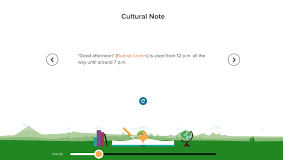
Pronunciation practice
When you start a conversation, you’ll hear phonetic cues and articulated audio incorporated into every word and phrase to help you perfect your accent and tune in to the tonal nuances of your chosen language.
Understood and literal meanings
It is important to note that not all interpretations were created equal. Interpret idioms, figures of speech, and non-translatable concepts that are often independent of the literal translations of a language.
Semantic color mapping
To develop a deeper understanding of the grammatical structure and mechanics of both languages, make links between the language you’re learning and the language you speak.

Building-block approach
Beginners are introduced to the lesson material by a native speaker, who then breaks it down as the session goes and builds it back up when the learner is introduced to new vocabulary, retention activities, and cultural context that provide a context for what they are learning.
Vocabulary
Through memory-building and critical-thinking exercises, as well as activities designed to help you retain what you’ve learned, the Mango platform is designed to introduce new words and phrases at various intervals, so that you’re familiar with how to absorb and apply relevant vocabulary to the grammatical structures you’ve already learned. It also helps with pronunciation.

Plans And Prices
Mango Languages may be free if your local library offers it, as previously noted. There are additional language study apps available in libraries, so it may be worthwhile to look for apps like that as well.
Even if you can’t get it free, you can subscribe to Mango for $7.99 a month for one language you’re learning, and $29.99 if you want the whole thing!
There is also a free trial available. Since comparable language learning applications often charge $10-$13 per month or $100-$150 per year, this is a terrific deal. But if you look at the worth of other apps, you get a lot more.

Those are the prices for a single account. Institutions, such as businesses and schools, can also subscribe to Mango Languages’ services. Different pricing and administrative options are available for each of these types of accounts.
Translation
Several words and phrases have no equivalents in other languages. Like there are words in Spanish that have equivalents in other languages. Mango gives you both the literal translation, and the intended meaning of the words. You could use an example to get an idea that is provided in the resources.
For non-idiomatic sentences, the literal and dynamic lessons can help you learn word order and get a 1:1 match between the words you’re learning in your target language and the meanings of those terms in English.
Even while Google Translate is far from being a perfect tool.
Google Translate is integrated into Mango Languages. Using what is perhaps the most advanced translation platform available today, you may get the translation for virtually any term. To acquire a translation of any word, sentence, or lengthier text, simply click on the “Tools” option for any language.
Interface
Mango’s clean interface is one of its greatest assets. The typefaces, colors, and designs on the screen are simple on the eyes and easy on the mind, making it a pleasure to use.
Also, the team has just recently (in 2019) modified the app to make it even more intuitive and streamlined.
Everything you want to accomplish with Mango is clearly laid out on your dashboard. Using the “Learn” menu, you may access the course progress and review prompts, while the “Tools” option provides access to dictionaries that come free with the app.

In addition, the lessons are color-coded, which is a great idea. Colors used in sample sentences and their English translations are in sync.
Because of this, it’s an easy way to learn and easier for you to understand word-by-word translations and learn how to use the correct word order in your chosen language.
Mango Movies
Mango Movies is another great service offered to various levels of users. There is a modest collection of authentic movies available from Mango Languages that can be used for immersive education.
You may learn vocabulary and grammar in context with ease thanks to Mango Movies. However, they are only available in the most popular languages such as French, Spanish, and German, and there are only a few of them. Three half-hour documentaries and a few short films are available in Spanish. This means that you can choose to watch the videos scene-by-scene.
There are also Mango Languages’ specialty programs such as medical Spanish or Russian slang, which may be of interest to those who aren’t complete beginners to the language.
Conclusion
It’s possible that Mango Languages will be a game-changing language learning choice, but the depth of the courses like Spanish is just too basic.
As far as features go, Mango’s pattern highlighting is the best by far, and its language coverage is outstanding.
This is a no-brainer if you’re learning rare or endangered languages and Mango is all that’s accessible.
According to the reviews, when it comes to languages like Spanish or French, there are better ways to spend your money. Also, you can try other apps like Babbel, Pimsleur, iTalki or Mondly which are considered as the best alternatives!
Mango’s pattern highlighting and simplicity is appealing, so you can use it as a supplement in most circumstances, but the lack of depth makes it unusable as a stand-alone course alternative. There are good lessons and if you are good at practice, you can acquire a language easily.
Click Here To Get Babbel At A Discounted Price! Click Here To Get Mondly At A Discounted Price! Click Here To Get Pimsleur At A Discounted Price! Click Here To Get iTalki At A Discounted Price!
J Maver
Passionate in tech, software and gadgets. I enjoy reviewing and comparing products & services, uncovering new trends and digging up little known products that deserve an audience.


